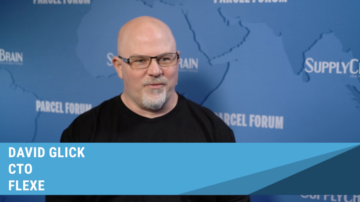
ESG reporting is here to stay — what are you doing about it?
Over the past few years, the environmental, social, and governance (ESG) space has grown and matured significantly. Today, over 90% of S&P 500 companies publish ESG reports, reflecting the increased expectations from employees, consumers, investors, and regulators.
Around the world, we're seeing ESG legislation turn to regulation, like Germany's Supply Chain Due Diligence Act, meaning supply chain operators must ready their reporting operations now to avoid scrambling to stay compliant later.
The truth is, many organizations are still figuring out what their most material issues are, which goals they want and need to pursue, how they track against those goals, and how best to communicate progress to stakeholders.
Here’s how they can get started.
Bridge the Visibility Gap
If executives responsible for making ESG and supplier decisions don’t have visibility into supply chains, it will be impossible for them to assess their progress toward ESG goals.
According to a recent EY report, 58% of supply chain leaders cite increased visibility in their supply chain as their top priority over the next two years. However, just 37% reported achieving significant visibility over the past two years. This gap shows that there’s a real need for tech and automation to help organizations successfully measure, manage, and ultimately perform across the entire supply chain to provide tangible ESG results like reduced emissions.
Set Goals and Lead with Data
“You can’t” manage what you don’t measure,” goes the saying. The same can be said for goal setting: Without benchmarking your current state, it’s impossible to accurately track your progress and plan ahead.
The problem is, sharing spreadsheets to track ESG data at each stop in the supply chain process is too slow. For this reason, I suggest companies take a data-first approach to their ESG efforts not just across the supply chain, but the entire organization itself. This starts with setting and incorporating ESG goals into the entire business function and implementing modern processes as a foundation to ensure future data extraction is easy and simple for all users. When implemented across the supply chain, technology like digital workflows can help organizations identify ESG objectives, ensuring they were achieved, and then measuring the effects for desired impact.
Once these goals and processes are established, companies can then set realistic benchmarks and expectations across their organization.
Prioritize Rigorous Data Collection, Then Standardize
Despite all the progress we’ve seen over the past few years, ESG reporting within the supply chain remains challenging and complex. Many companies simply do not know what data to track, and the most prominent challenges occur when companies don’t have the systems in place to automate data collection from suppliers.
The problem is, ESG performance in the supply chain is often more critical than direct operations.
To understand the ESG performance of suppliers, organizations must first maintain rigorous collection, management, and analysis of data. Then, organizations must identify the KPIs needed to succeed and embed these objectives across their supply chain.
Modernize Your Way to ESG Maturity
Another major impediment to ESG reporting is infrastructure: Many organizations are still using outdated ERP systems that weren’t designed to accommodate ESG initiatives within the supply chain, making it difficult to efficiently manage ESG data while maintaining high impact, forward-looking sustainability results.
Changing this process is critical. Modernizing outdated systems is vital to making business operations more sustainable and can add massive value to ERP and supply chain systems. For example, companies should focus on transforming traditionally high-effort supplier engagements that live in email and spreadsheets into modern, digital experiences. This will enable teams to reduce operating costs and refocus talent on building a more resilient, diverse, and quality supply base.
Modernization is especially critical as companies contend with louder calls for more holistic ESG management and reporting. The ability to track and report carbon reduction, talent attraction, and data security efforts across supply chains and operations on a single platform is quickly becoming a requirement.
Ultimately, to execute ESG goals, organizations that invest in supply chain maturity will gain greater visibility into and transparency across their supply chain partners and stakeholders, while embedding ESG activities into daily work across the enterprise.
Kirsten Loegering is vice president of product management, ERP solutions, at ServiceNow.
- SEO Powered Content & PR Distribution. Get Amplified Today.
- Platoblockchain. Web3 Metaverse Intelligence. Knowledge Amplified. Access Here.
- Source: https://www.supplychainbrain.com/blogs/1-think-tank/post/36407-how-companies-can-prepare-their-supply-chains-to-be-more-green-diverse-and-compliant-in-2023
- 2023
- a
- ability
- About
- about IT
- accommodate
- accurately
- achieved
- across
- Act
- activities
- against
- ahead
- All
- analysis
- and
- approach
- automate
- Automation
- base
- becoming
- benchmarks
- BEST
- Building
- business
- business operations
- Calls
- Can Get
- carbon
- Carbon Reduction
- chain
- chains
- challenges
- challenging
- collection
- communicate
- Companies
- complex
- compliant
- Consumers
- Costs
- critical
- Current
- Current state
- daily
- data
- data security
- decisions
- designed
- difficult
- digital
- diligence
- direct
- diverse
- doing
- Dont
- each
- effects
- efficiently
- efforts
- Emissions
- employees
- enable
- ensure
- ensuring
- Enterprise
- Entire
- environmental
- ERP
- ESG
- especially
- established
- example
- execute
- executives
- expectations
- Experiences
- extraction
- EY
- few
- First
- Focus
- forward-looking
- Foundation
- from
- function
- future
- Gain
- gap
- Germany
- get
- goal
- Goals
- Goes
- governance
- greater
- Green
- grown
- help
- here
- High
- holistic
- How
- However
- HTTPS
- identify
- Impact
- implemented
- implementing
- impossible
- in
- incorporating
- increased
- Infrastructure
- initiatives
- Invest
- Investors
- issues
- IT
- itself
- Know
- lead
- leaders
- Legislation
- live
- maintain
- major
- Making
- manage
- management
- many
- massive
- material
- maturity
- McKinsey
- meaning
- measure
- measuring
- Modern
- more
- most
- Need
- needed
- next
- objectives
- operating
- Operations
- operators
- organization
- organizations
- partners
- past
- perform
- performance
- Place
- plan
- platform
- plato
- Plato Data Intelligence
- PlatoData
- Prepare
- president
- priority
- Problem
- process
- processes
- Product
- product management
- Progress
- prominent
- provide
- publish
- quality
- quickly
- RE
- ready
- real
- realistic
- reason
- recent
- reduce
- Reduced
- Regulation
- Regulators
- remains
- report
- Reported
- Reporting
- Reports
- requirement
- resilient
- responsible
- Results
- rigorous
- S&P
- S&P 500
- Said
- same
- security
- seeing
- ServiceNow
- set
- setting
- sharing
- should
- Shows
- significant
- significantly
- Simple
- simply
- single
- slow
- Social
- Solutions
- Space
- stakeholders
- started
- starts
- State
- stay
- Still
- Stop
- succeed
- Successfully
- suppliers
- supply
- supply chain
- Supply chains
- Sustainability
- sustainable
- Systems
- Take
- Talent
- teams
- tech
- Technology
- The
- the world
- their
- to
- today
- too
- top
- toward
- track
- traditionally
- transforming
- Transparency
- TURN
- Ultimately
- understand
- users
- value
- Vice President
- visibility
- vital
- What
- which
- while
- will
- within
- without
- Work
- workflows
- world
- years
- Your
- zephyrnet












